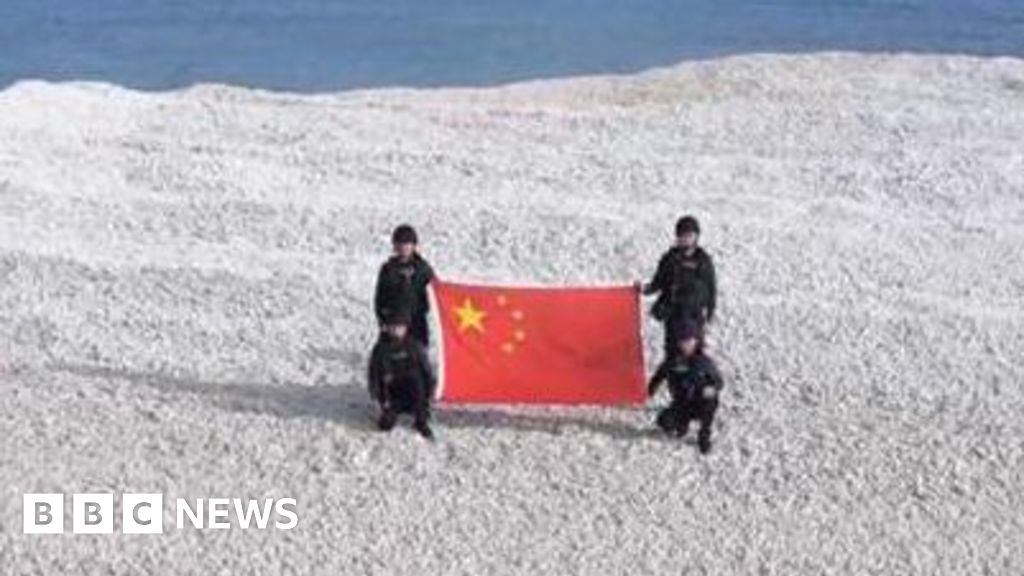Beijing Claims South China Sea Sandbank: A Rising Tide of Tension
The South China Sea, a vital waterway teeming with resources and strategic importance, is once again the center of geopolitical tension. China's recent claim over a previously unclaimed sandbank is escalating concerns amongst neighboring countries and international observers. This move, while framed by Beijing as a routine assertion of sovereignty, is viewed by many as a further attempt to solidify China's dominance in the disputed region.
The Sandbank in Question: Location and Significance
While the exact location of the sandbank remains somewhat vague in official Chinese statements, its strategic position within the contested Spratly Islands archipelago is undeniable. Control of this sandbank, even a small one, provides access to crucial shipping lanes and potentially valuable resources, including fishing grounds and potential undersea mineral deposits. This underscores the significance of Beijing's claim, regardless of the sandbank's size.
China's Justification: A Familiar Narrative
China's justification for its claim mirrors previous assertions of sovereignty in the South China Sea. Beijing often cites historical maps and its "nine-dash line," a demarcation that encompasses vast swathes of the sea and is largely rejected by international law. This time, however, the claim is generating heightened anxiety due to its potential implications for regional stability. The lack of transparency regarding the sandbank's precise location and the absence of detailed supporting evidence are further fueling these concerns.
Regional Responses: A Chorus of Discontent
Neighboring countries with overlapping claims in the South China Sea, such as Vietnam, the Philippines, Malaysia, and Brunei, have expressed strong reservations about China's actions. These countries are likely to view this move as another provocative step in China's long-term strategy to control the region's resources and influence. International organizations and other world powers are also closely monitoring the situation, wary of potential escalation.
International Implications: A Test of Global Order
The South China Sea dispute is not merely a regional issue; it's a test of the international rules-based order. China's assertive actions challenge established norms of maritime law and international arbitration. This development could have significant ramifications for global maritime security and the broader balance of power in the Asia-Pacific region. The international community will be watching closely to see how this situation unfolds and what steps, if any, are taken to de-escalate tensions.
What's Next? Unpredictable Waters Ahead
The future trajectory of this situation remains uncertain. Further diplomatic efforts are likely, but the history of the South China Sea disputes suggests that finding a peaceful resolution will be challenging. The potential for further incidents and escalations remains high, highlighting the need for sustained international attention and engagement.
Key Takeaways:
- Strategic Location: The sandbank's location within the Spratly Islands gives it significant strategic value.
- Historical Claims: China's claim relies on its disputed "nine-dash line" and historical interpretations.
- Regional Tensions: The claim has intensified existing tensions with neighboring countries.
- International Implications: The incident tests the international rules-based order and global maritime security.
- Uncertain Future: The situation's future remains volatile and requires close monitoring.
Call to Action: Stay informed about developments in the South China Sea by following reputable news sources and engaging in thoughtful discussions about the implications of this ongoing dispute. Understanding the complexities of this issue is crucial for navigating the challenges of the 21st-century geopolitical landscape.

